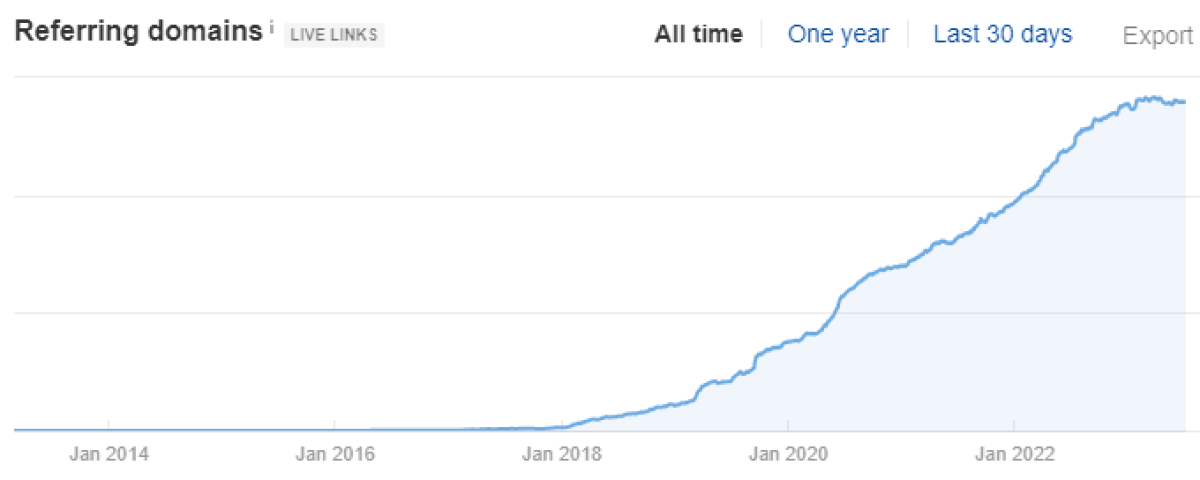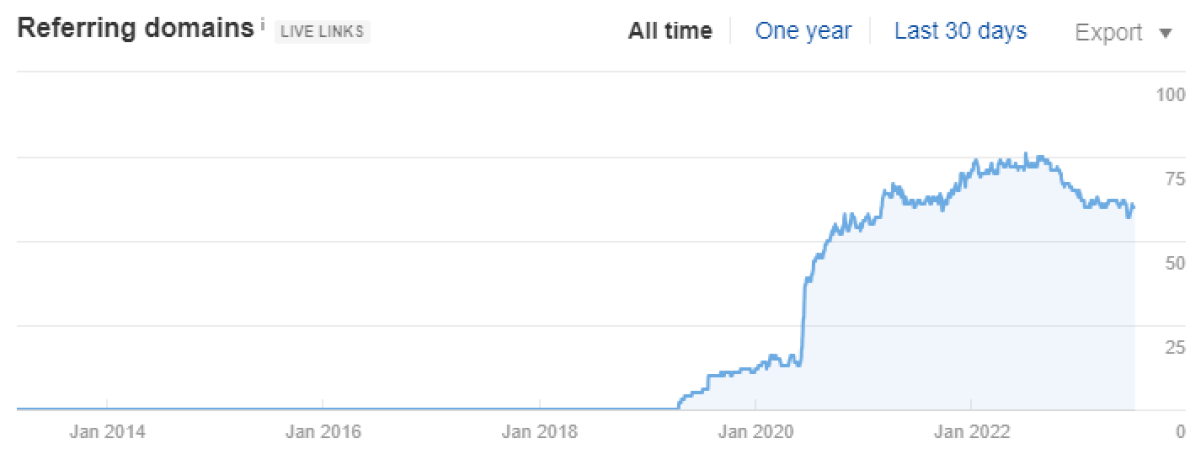Manual link-building isn’t for the faint of heart. You knock on many doors, endure countless rejections, and occasionally score a few backlinks — campaign after campaign after campaign.
It’s a disheartening process many content marketers have to endure. But there’s another way.
Create linkable content you know people want to reference on topics that naturally attract high-quality backlinks. We’re going to walk you through that process and teach you how to find linkable content ideas that generate backlinks on autopilot.
7 Steps to Identify Topics With Organic Link-Building Potential
Attracting backlinks is vital for moving the organic traffic needle, especially if better content alone doesn’t lead to the search rankings you hoped for.
Here’s how to find the keywords and, by extension, the topics that attract backlinks naturally.
1. Know Your Audience
Your product’s audience is not your link-building audience.
Your link-building audience consists of writers, content marketers, editors, SEOs, and site owners — the people who need to reference a source while creating content.
You can create content for these two audiences in parallel. Or you can first create linkable content to boost your site’s authority and then work on content that targets your prospects.
2. Find Your Content Competitors
Your content competitors might be different from your product competitors.
An easy way to find content competitors is to identify five to 10 broad topics you want to cover. Google these topics and make note of the sites that show up on page one of SERP.
Then use SEO tools like Ahrefs or Semrush to narrow down the list to the five to 10 highest-authority competitors.
Let’s say “data integration” is a topic you want to create content on. A simple search of this keyword reveals that you’ll be up against some powerful content competitors, including Talend, Qlik, Google, and Confluent. Each site has a 75+ domain rating and hundreds of thousands of backlinks. Beating them will require a significant effort.
Finding competitors is even easier if you have many published articles in a certain niche. Use your SEO tool of choice to identify competitors that cover similar keywords and topics like you.
3. Identify Competing Pages With the Most Referring Domains
Run each high-authority competitor through an SEO tool to find pages with the most referring domains.
In Ahrefs, this option is known as the “Best by links” option in the “Pages” menu.
Focus on domains, not only backlinks. One domain can send multiple backlinks to your site. It’s preferable to have 10 links from 10 domains as opposed to 10 links from a single domain, assuming their domain rating is the same.
Here are the Animalz pages with the most referring domains:

You’ll see in the first row that 844 different domains link to our homepage. And our two most linked-to blog posts are BLUF: The Military Standard That Can Make Your Writing More Powerful and The Animalz Content Marketing Benchmark Report 2021.
Create a spreadsheet where you’ll keep track of the pages with the most referring domains for each competing site.
4. Expand the Research With Keyword Modifiers
Expand your search for linkable content ideas by manually researching keywords that tend to attract organic links.
Find these keywords by using the following non-exhaustive list of modifiers in your SEO tool:
Types of
Statistics
How to
How many
Example
Template
What is
Facts
Number of
For instance, if you’re researching the keyword “SEO,” you could plug the following keyword variations into your SEO tool:
SEO statistics
SEO examples
SEO templates
SEO facts
Make a note of the pages that rank for these keywords and have a high number of referring domains.
5. Identify Pages That Grow Backlinks Organically
By this point, you should have a significant list of competitors’ pages that have hundreds, if not thousands, of backlinks and referring domains. It’s now time to find out which of these pages have acquired their backlinks organically.
There are two tell-tale signs of organic link acquisition:
1) Gradual growth of referring domains: Look for pages whose backlink profile looks something like this:

And not like this:

A steep increase in referring domains may reflect a manual link-building campaign or an influx of spammy links, both of which you want to rule out.
2) High authority of referring domains: Check the profile of referring domains for each page. Is there a significant number of high-authority domains linking back? Or are the links primarily from low-quality sites? Do anchor texts look normal? You want evidence that referring domains are legit sites with respectable domain authority.
Now you’re left with a list of pages that, to the best of your knowledge, have acquired backlinks organically.
6. Find Keywords That Grow Backlinks Organically
The next step is to identify the keywords the selected pages are optimized for and whether you should go after these keywords. Here’s how to do that:
1) Extract target keywords: Run the pages you’re left with through an SEO tool to find their primary keywords. Extract these keywords in a separate sheet along with their keyword difficulty and search volume metrics.
2) Filter out hard-to-win keywords: Rule out the keywords that your site would struggle to rank for based on its domain rating and SERP competitors. For instance, a site with a domain rating of 20 would struggle to rank for a keyword with a ranking difficulty of 90. Things aren’t always this simple, but it’s a good rule of thumb.
3) Don’t focus too much on search volume: Don’t rule out a keyword just because it has a low search volume. The goal is for your piece to acquire backlinks, while traffic is of secondary importance.
7. Decide on an Editorial Strategy
You now have a list of content ideas and their respective keywords that attract backlinks organically and that you can rank for.
It’s time to decide on your editorial strategy for each keyword. Here are the factors you might want to consider:
1) Search intent: As always, your angle should be informed by the search intent. Also, think about what kind of format content searchers want. Text, video, audio? Blog posts, ebooks, courses, or something else?
2) Better content: Brainstorm what it would take to make your content five or 10 times better than the competing content. Is it just a matter of having a longer and more exhaustive piece? Or is there an “information gain” angle you can take and add new details that nobody else is talking about?
3) Common themes: Try to find themes among the pages you identified in step 5. Are pages with lots of backlinks primarily original research studies and surveys? Or maybe definitional posts attract backlinks. Whatever it is, spotting some broad patterns can help you decide what type of content you should produce.
4) Domain rating: Your domain rating is another factor that impacts your editorial strategy. If you have an incredibly strong domain rating, you are more likely to muscle your way to the top of page one of SERP, even with less-than-perfect content. If your domain rating is on par with competitors or even lower, then the quality of your content might make or break your SEO efforts. This is a gross oversimplification of SERP movements, but we’ve seen it play out too often to ignore.
As your linkable content starts ranking and attracting organic visitors, your link-building audience will start referencing your page in their content. And you get to kickstart the flywheel of backlinks.
You might even consider using paid ads to get your piece across to your link-building audience faster if you are too impatient to wait for organic traffic to build up.
Link-Building as a Virtuous Cycle
High-quality content and backlinks are your SEO moat. And while building this moat takes time, it doesn’t have to be a tedious and overly manual process.
Create content that people want to read, reference, and link to. And get that content in front of your target audience.
This creates powerful momentum. Linkable content drives backlinks that drive more traffic, which results in even more backlinks. And such a virtuous cycle is the essence of content-led link-building.
